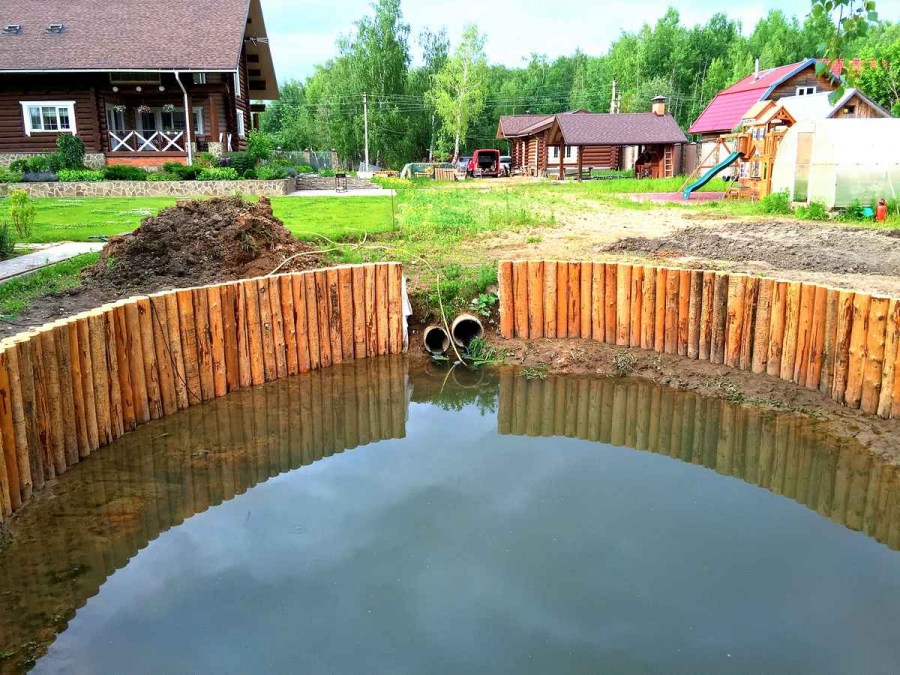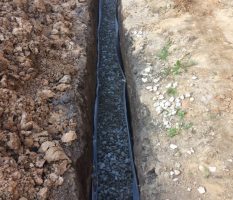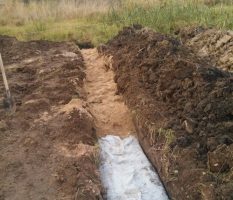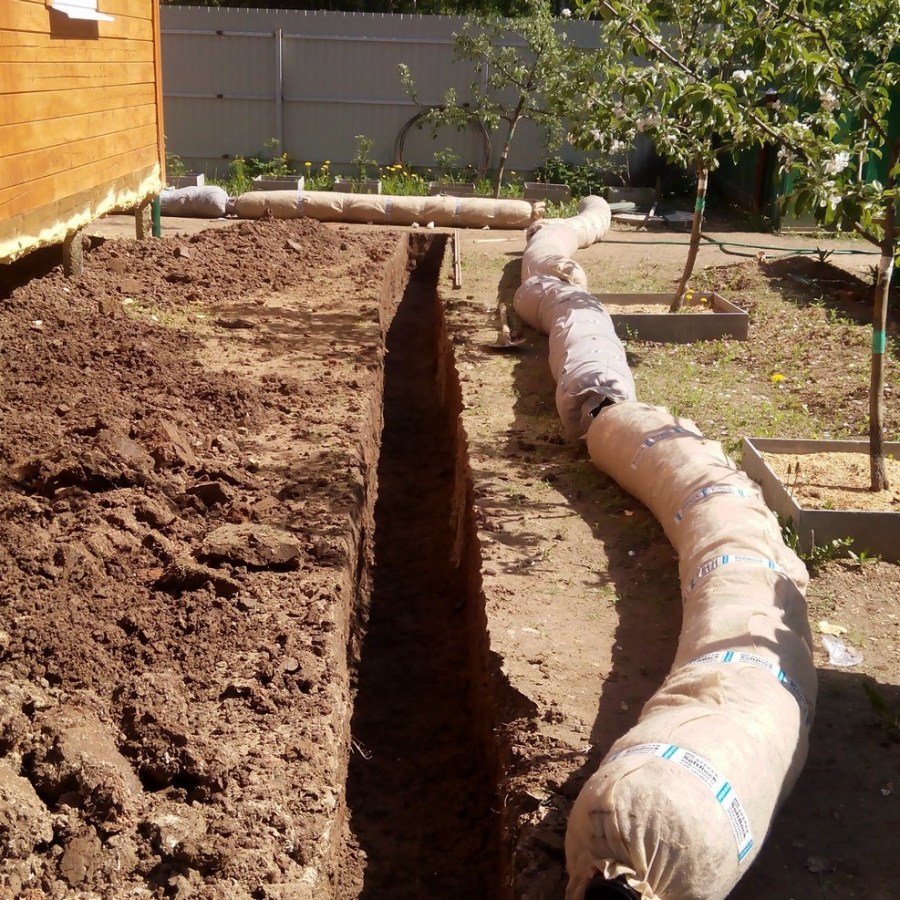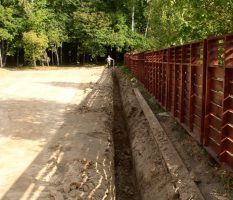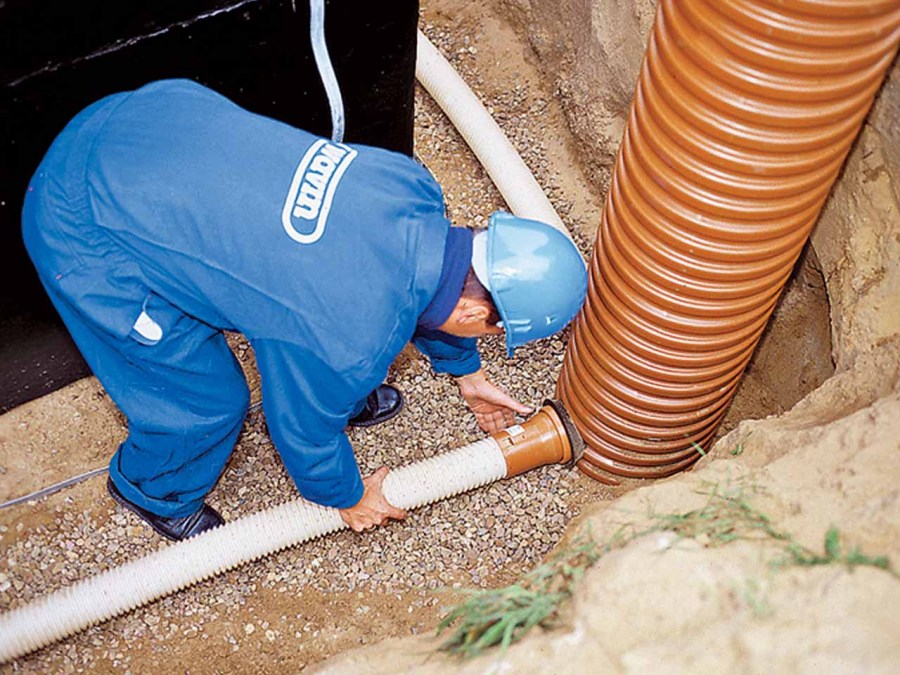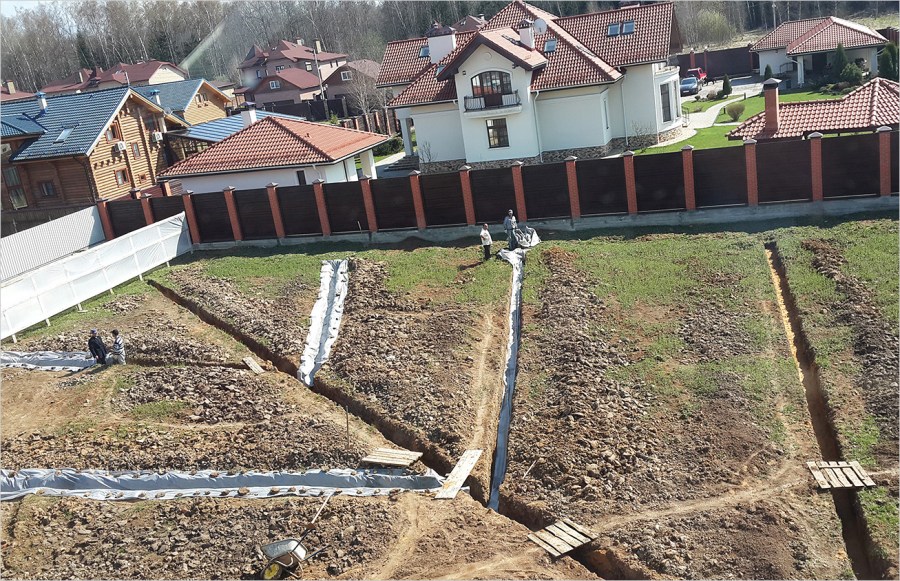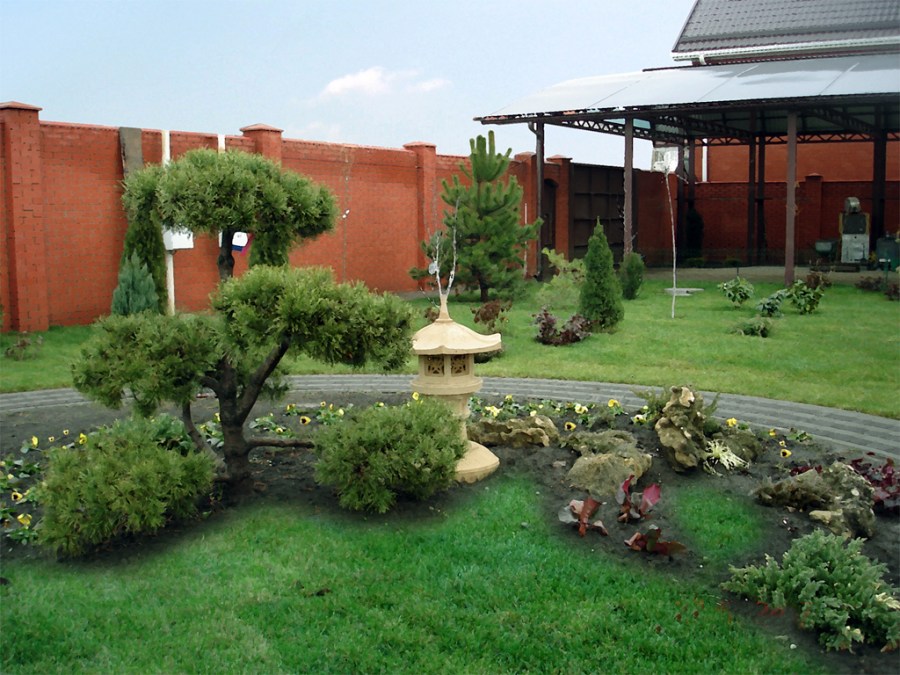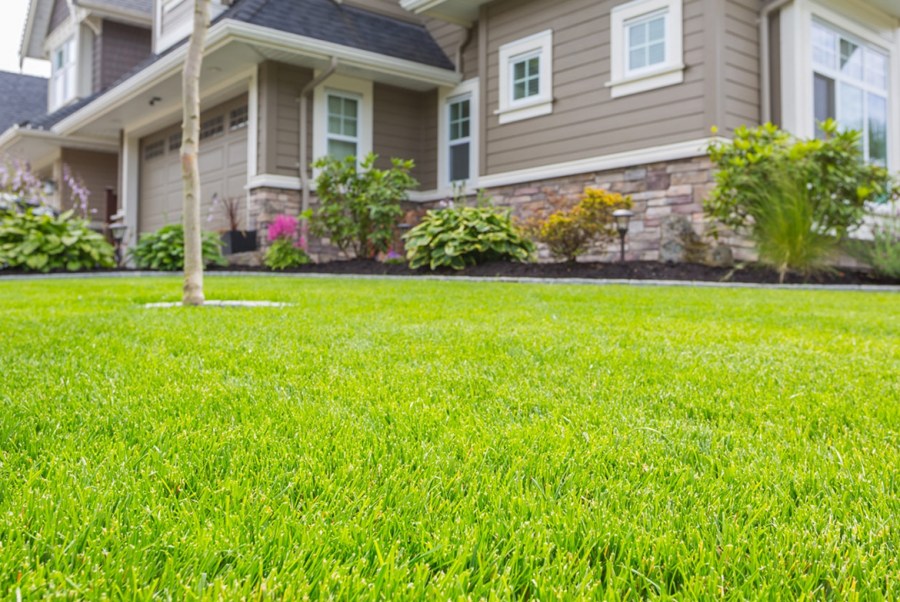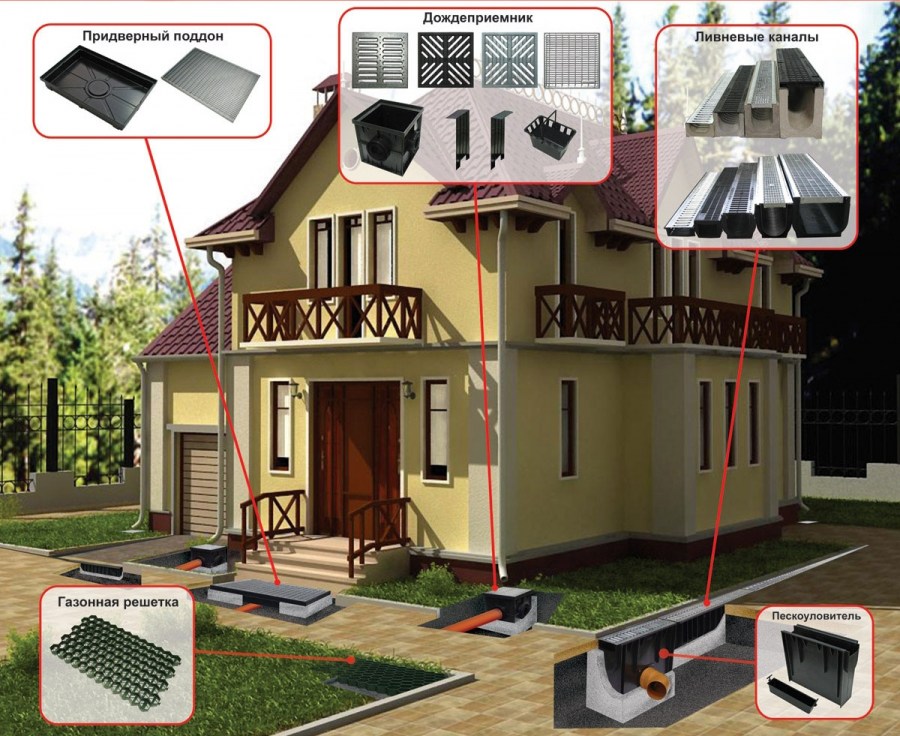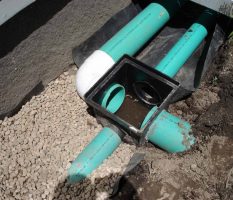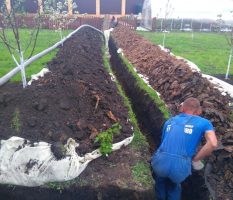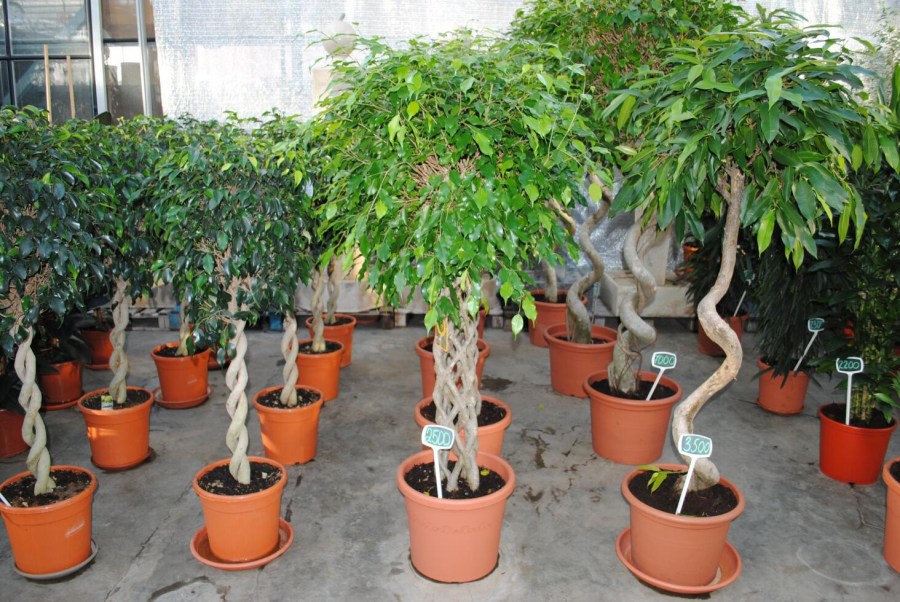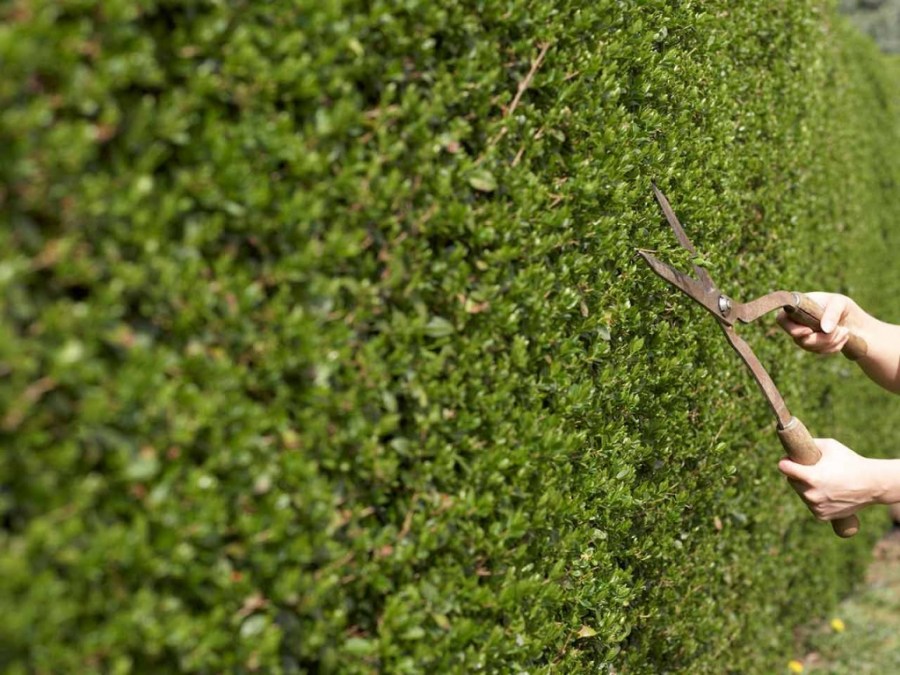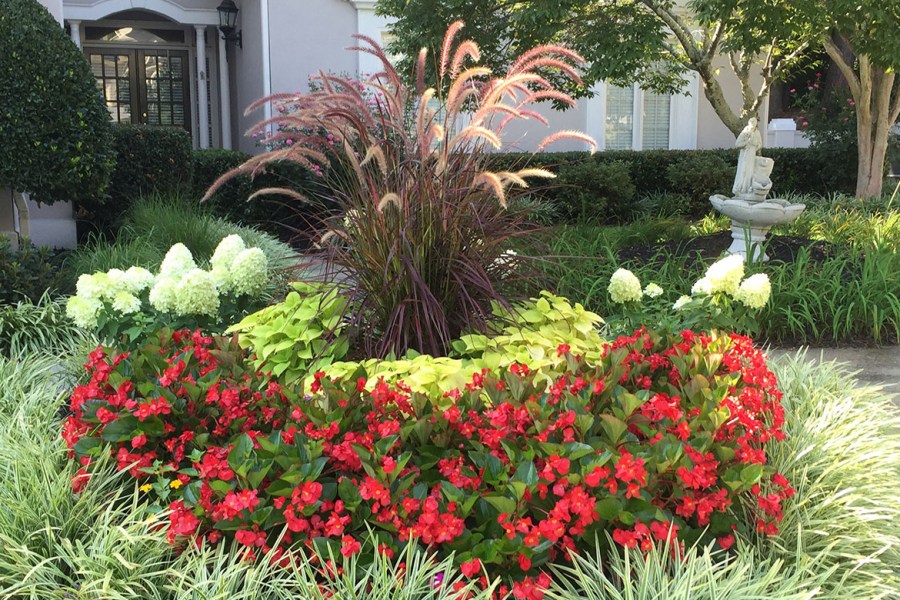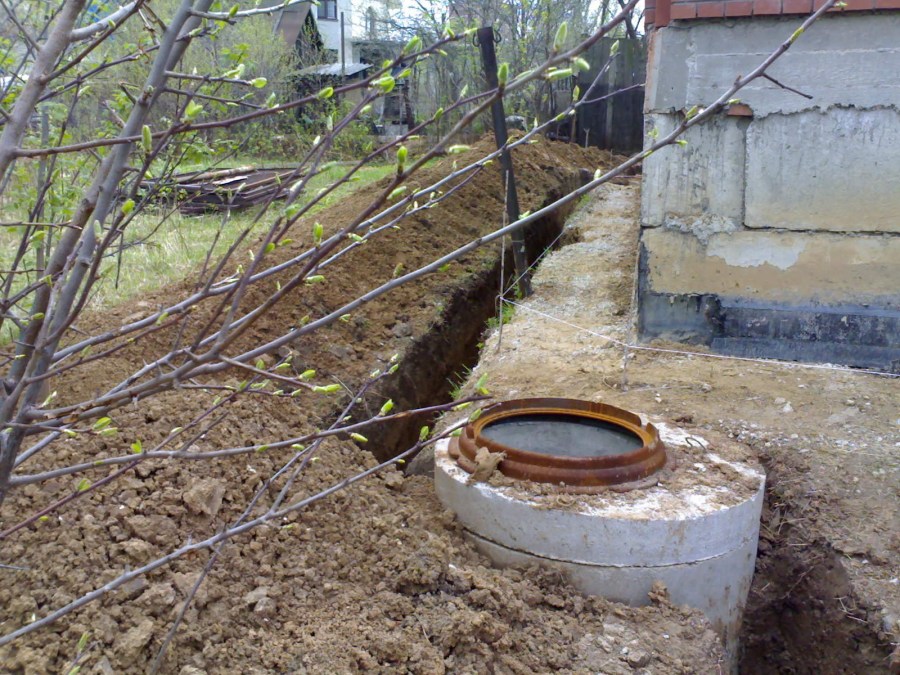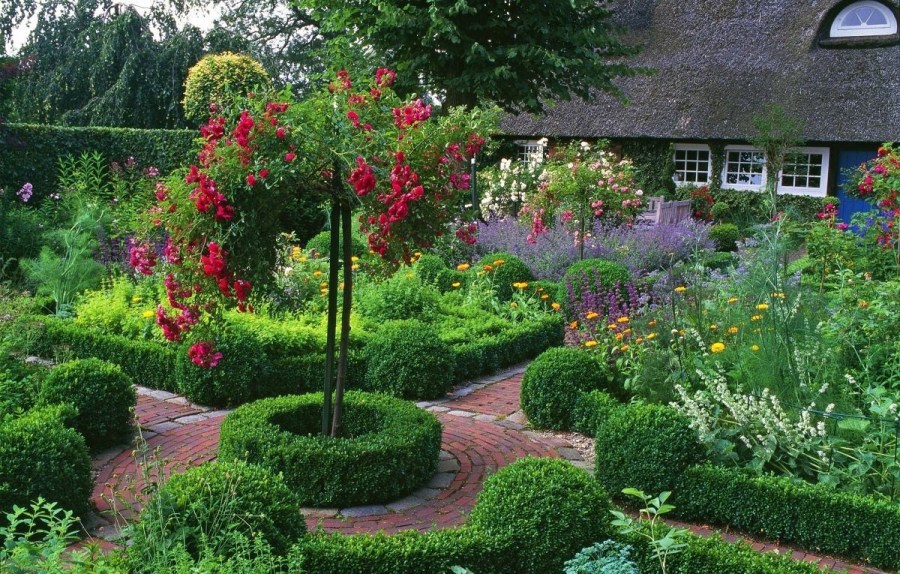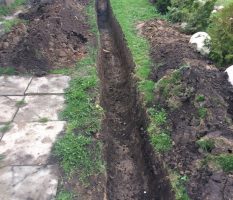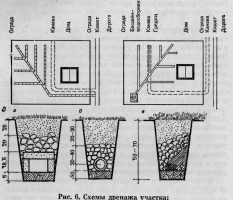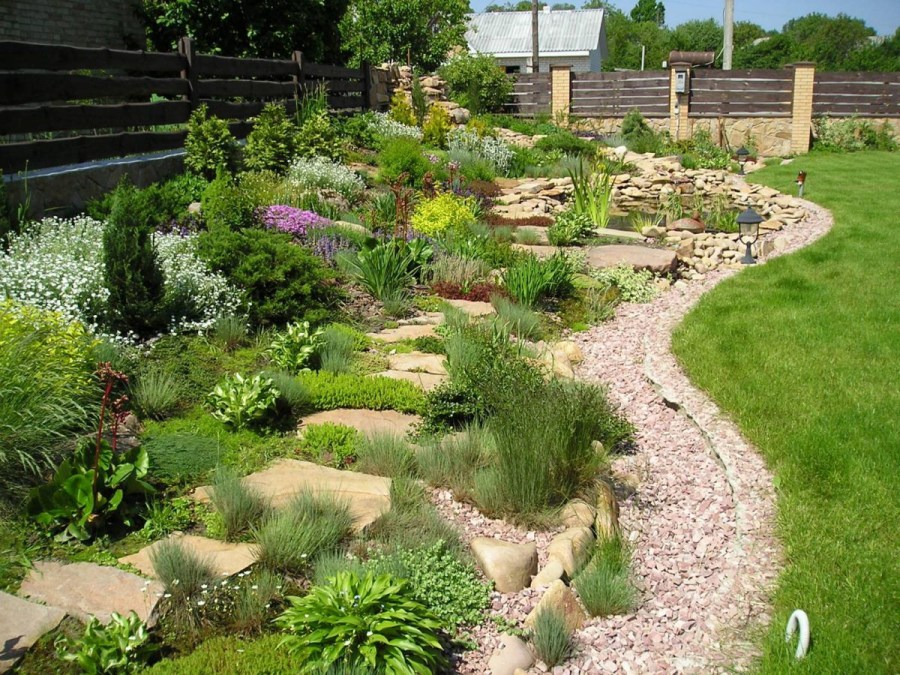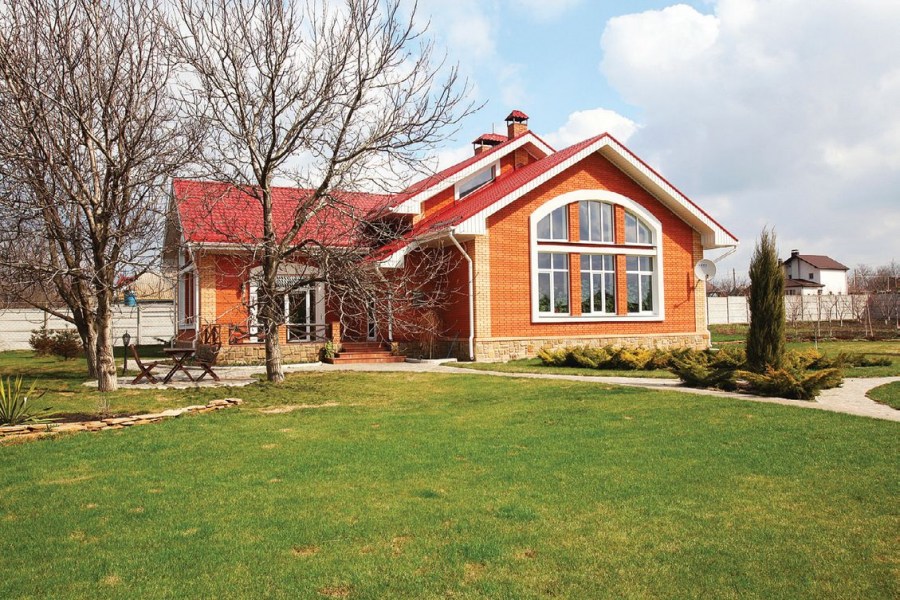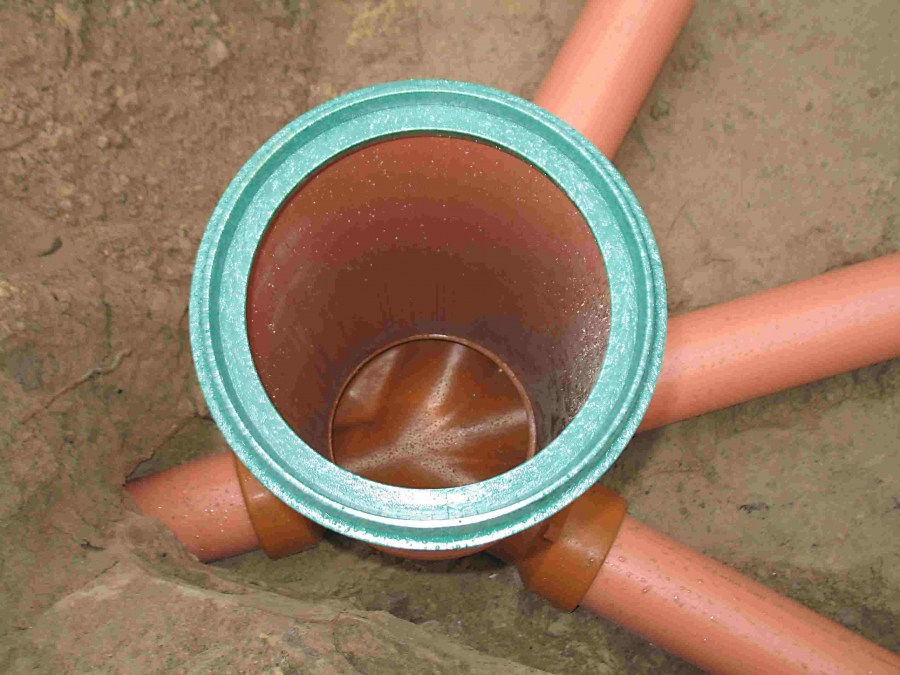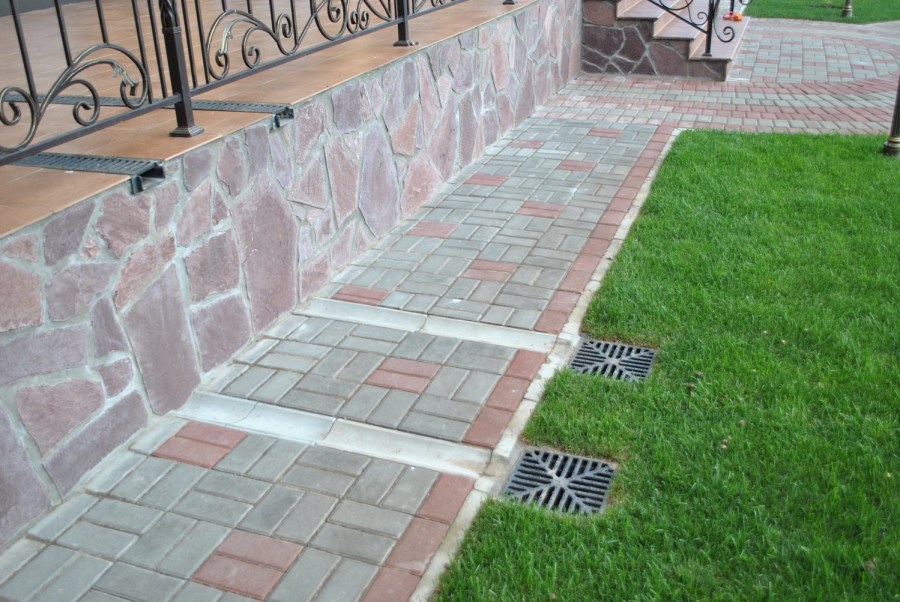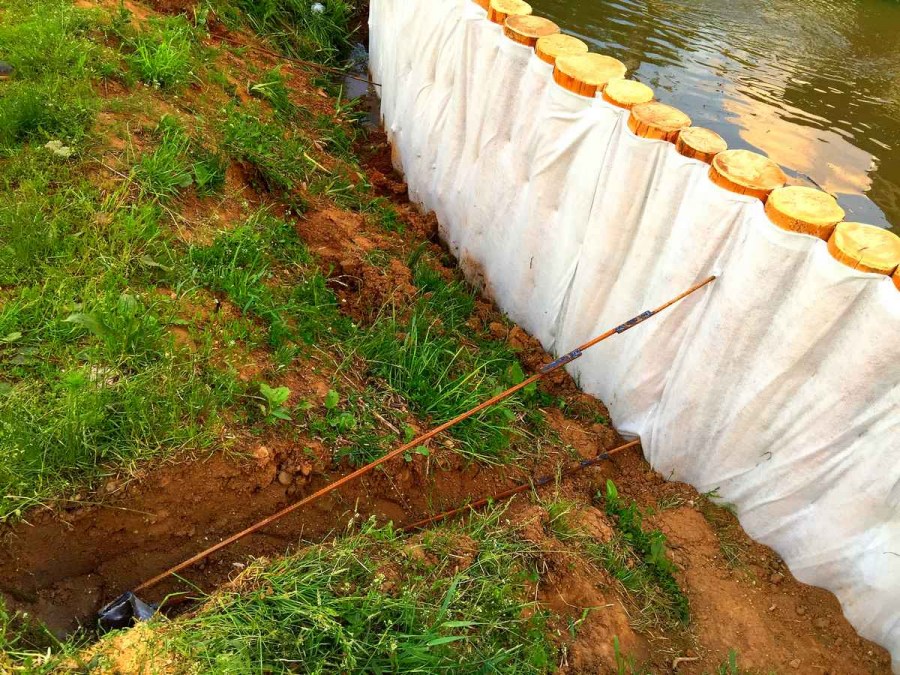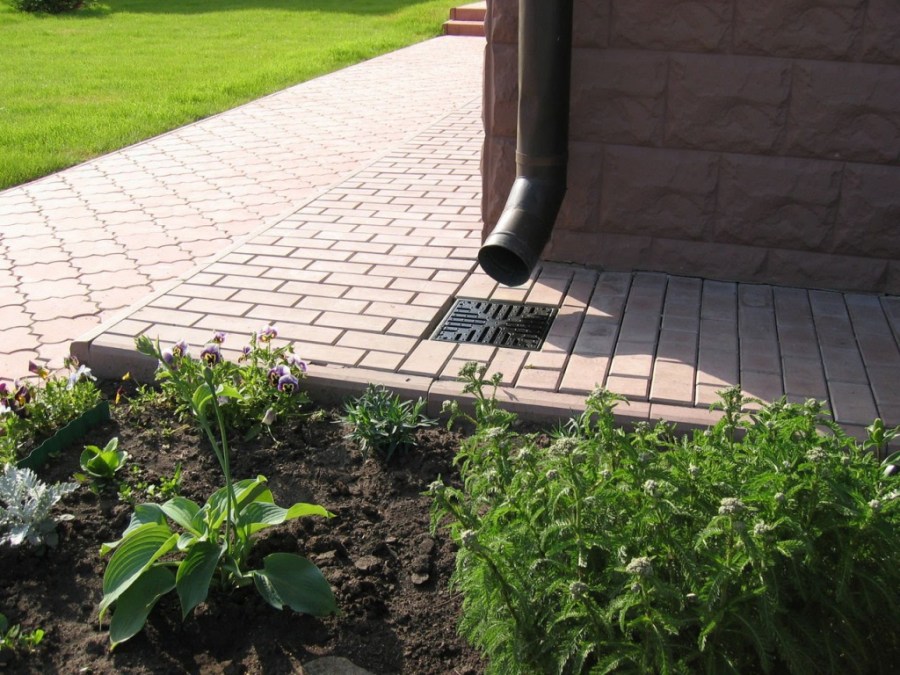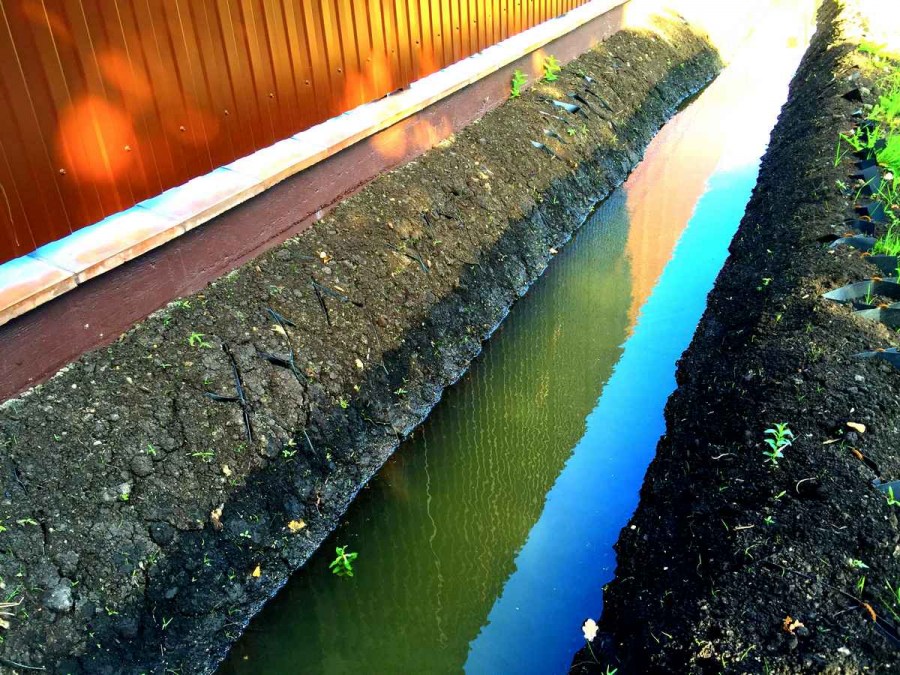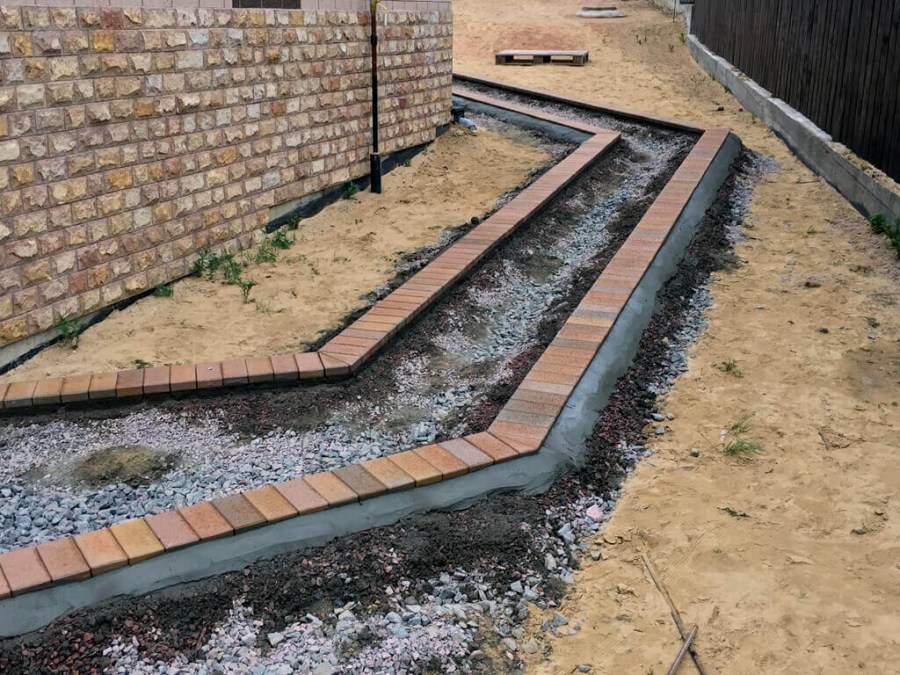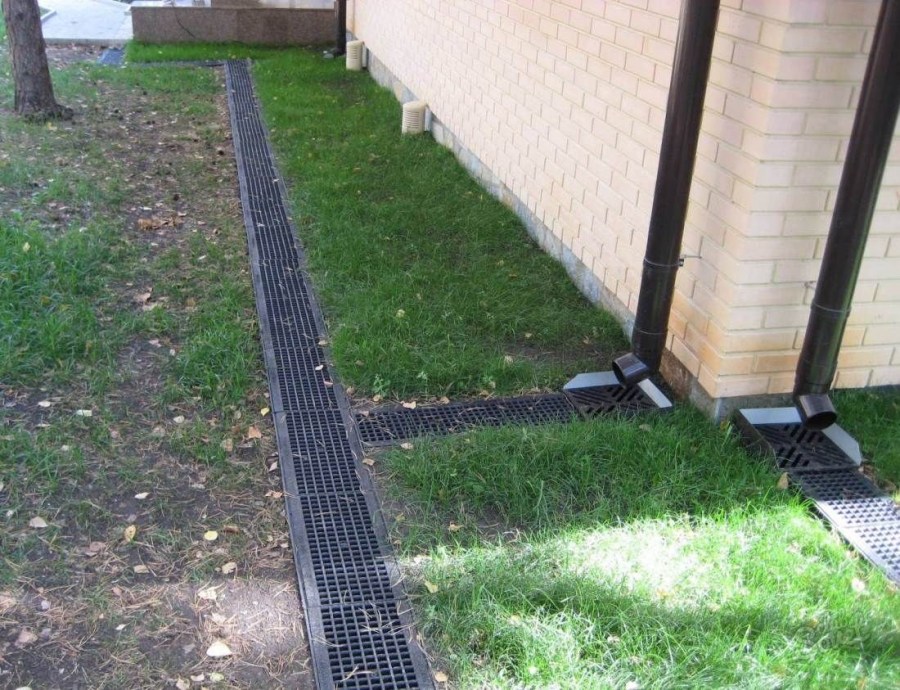How to drain the site: effective methods of disposal of groundwater with your own hands (70 photos)
Water is one of the most important components on earth. Without water, not a single plant can grow, but sometimes there is so much water that it becomes a big problem. A huge number of owners of suburban areas are faced with this. Excess moisture does not contribute to either construction or agriculture.
A site located in a lowland or soil containing a large amount of clay is, of course, a “headache”. But still, such problems are completely solvable; it is necessary to drain the area from the water.
Drainage systems
Drainage is a whole range of measures designed to produce an outflow of excess moisture from the soil. Before you start creating a drainage system, you should pay attention to:
- Landscape.
- The amount of groundwater.
- The presence of precipitation.
- Layout of communications.
- The presence and location of underground facilities.
- Soil structure.
- Possibility of planting trees and shrubs.
Stagnant water creates a strong threat to buildings located on such soil. It remains to choose the most suitable version of the system.
It is possible to drain the soil using the device of deep or surface drainage. The tasks for both options are similar - removing excess moisture, but the principles of their laying and their work occur in different ways.
So, surface drainage produces an outflow of water from the upper soil layers, which accumulate after rainfall.
Surface drainage
To drain the topsoil, a linear or point structure is suitable. Water collectors are placed in the place where the least amount of moisture. Suitable for this:
- Different ruts of natural origin.
- The space at the front door.
- Place at the bottom edge of the veranda.
- Entrance gate area.
The point system is very simple. When you create it, you do not need to create an accurate plan. To create a structure, it is necessary to prepare water receivers, drainage systems, storm gates and water traps.
To preserve fertile soil in the area with a slope of 3 or more degrees, it is necessary to create a storm system. It will be useful for:
- Washing tracks with water.
- Draining the space near the entrance to the garage.
- If there is prolonged rain and you need to remove a lot of moisture from the foundations of buildings.
Linear drainage
A drainage system deepened in the soil is called linear drainage. Top gutters are covered with removable metal grilles.
With this method of draining the site with your own hands, the main condition is the correct location of the grooves. The gutters are laid making a slight slope, so that water flows move independently.
Moving along the groove, moist masses enter the filter. With the help of a filter, the masses are cleaned, and from it water flows through the drainage system into the storm system.
The construction of linear drainage is troublesome and requires preliminary planning. Laying a concrete base is mandatory for all parts of this system. If the catchment area is large, then it is necessary to fill the foundation with concrete using a slope.
To enhance the operation of the drainage system, you can create a combination of various designs. With this arrangement, even large volumes of water will not cause significant damage to either buildings or vegetation.
Deep drainage
To remove excess moisture from the site, underground drains are also used. To collect them you will need to install a well.
By the principle of groundwater assembly, systems are:
- Upright.
- In horizontal position.
- Combined.
Vertical positioning systems are produced according to the principle of ribbed wells. Wet layers place their placement. Inside the well place the filter and pump unit.
Therefore, these structures are already engineering structures that need constant care. This is the reason why the vertical drainage system is not popular.
The simplest and most affordable system is the horizontal position of the deep drainage system. The main elements of this system are drains. Drain is a corrugated pipe designed for laying in a previously dug ditch. The use of corrugated PVC pipes is due to their inexpensive price and ease of installation.
Instructions on how to drain the area look something like this:
- We draw up a laying plan, where we designate the location of the sewer well.
- Guided by the plan, we dig out the grooves.
- We lay sand at the bottom of the grooves and cover it with special material. The material should be enough to cover the pipes.
- We place the drains downhill in the direction of the well.
- We connect the individual parts using tees and crosses.
- We wrap the pipes and fill it with gravel, and up a layer of earth.
Do not forget about the liberation from water and the well itself. Drainage from the well can be arranged in the nearest ravine or in the central shower.
Drainage Care
For proper care it is necessary:
- Perform a regular inspection of the well. If necessary, clean it.
- Once every ten years, a thorough flushing must be carried out to remove deposits from the walls of the pipes.
- Do not use heavy vehicles on drains.
- Systematic loosening of the soil with subsequent pressing is also one of the methods of caring for the system.
- Using a hose with a high pressure, it is necessary to flush the pipes from soil, silt and debris.
Swamp in the area
In order to drain the swamp on the site, it is necessary to raise the soil level of the entire site with the creation of a drainage ditch along the entire perimeter. This method is very expensive and therefore not accessible to everyone.
Before starting to drain the marshy area, it is necessary to determine how deep the ditches should be made. With seasonal swampiness of the site, we break through the channel along the lowest part. It will be appropriate to have a large number of drainage ditches.
On clay soil
On clay soil, melt water and precipitation fall on the surface for a long time without leaving the soil. This is neither good for a flat area, nor for a section at an angle. On the sloping section, streams of water from the lands located above are added.
The easiest solution to this problem is to create open ditches. Closed drainage system is ineffective here.
By nature
Not everyone has the opportunity to create and maintain a serious drainage system. And here the plants draining the plot come to the rescue.
The lower part of the site where the soil is most moistened is planted with hygrophilous plants. With the absorption of excess moisture will do just fine:
- Weeping willow and birch. These trees are ideal for planting along the edge of the plot.They take root well and immediately begin the draining process.
- A highly moistened area is suitable for planting alder, ash, larch and maple. These trees not only effectively cope with the task of drainage, but can also become a decoration of your site.
- The only cultivated tree for a garden with high humidity is plum.
There are plenty of ways to deal with a lot of moisture. And everyone can find the option that suits him. So an excessively wet area is not a sentence!
Photo tips for draining a plot
Projects of one-story houses - 120 design photos. Overview of the best options for country houses
Garden Decor - 130 Photos of Design Ideas and Decorative Ponds
Vertical flower beds: 90 photos of the main options for implementation in the garden
Gasoline motor pump: 60 photos of the most effective water intake devices
Join the discussion:

